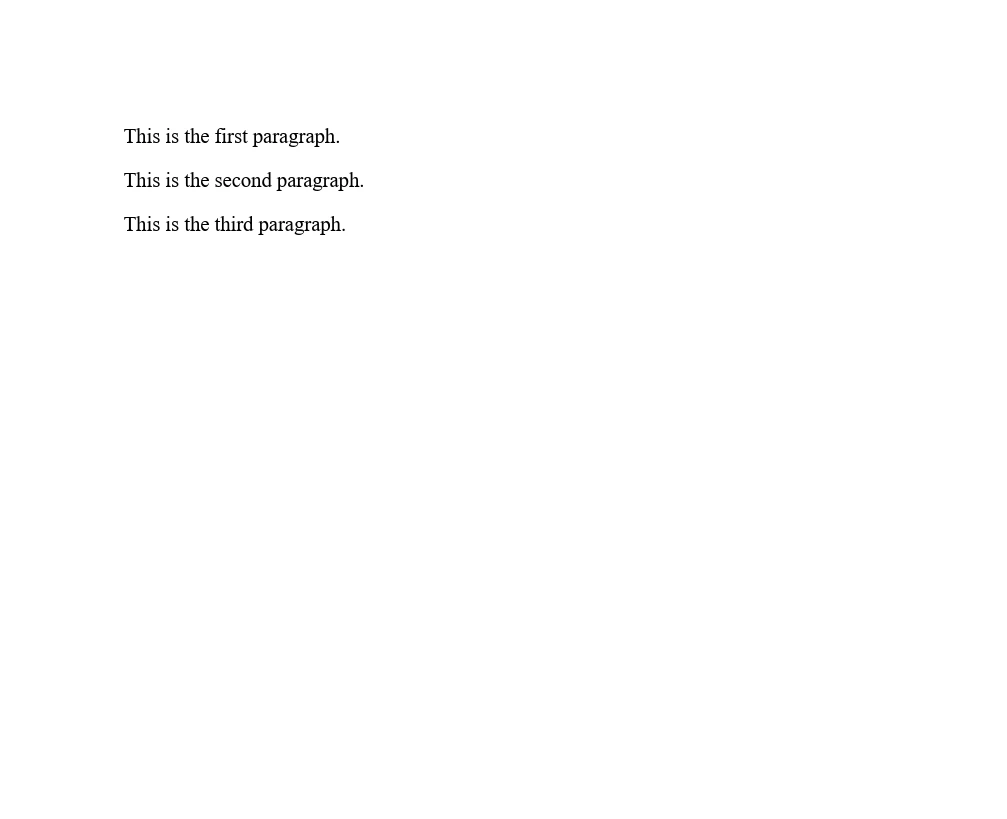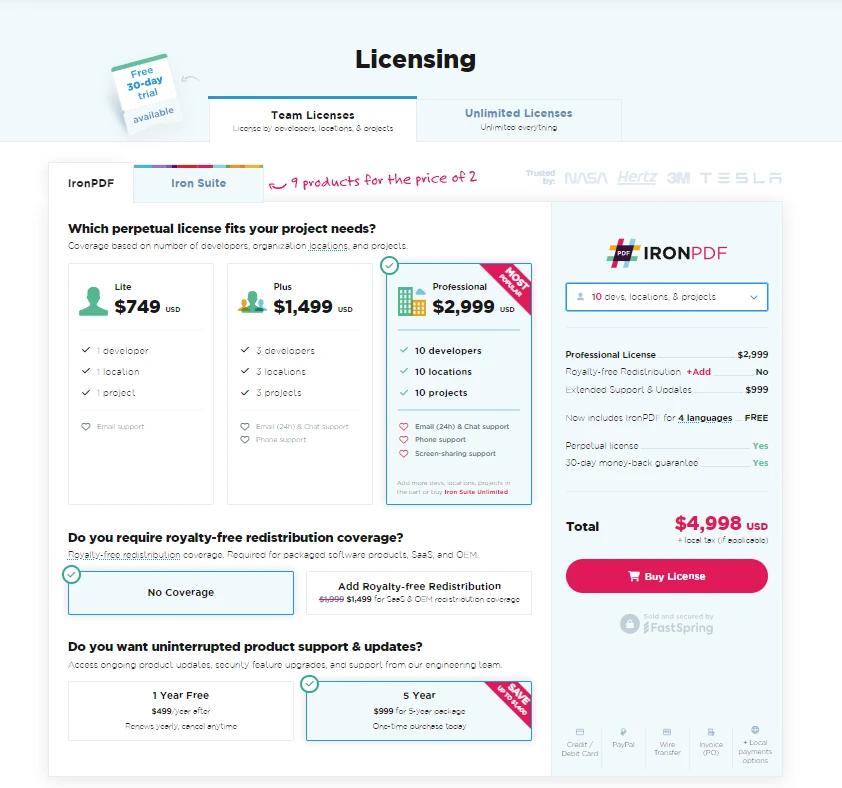Published April 4, 2024
C# String.Join (How It Works For Developers)
In C#, String.Join is a powerful method used for string concatenation, allowing developers to join individual strings from an array or a collection into a single string. String.join method requires at least two parameters: a string separator and an array or collection of elements to join. The separator is inserted between every element within the resulting string. This function is useful when you need to concatenate multiple strings with a specific separator, such as a comma, space, or custom character. In this article, we'll cover String.Join method and IronPDF library.
Syntax of String.Join
The String.Join method comes with several overloads in C#, each designed to cater to different needs. The most commonly used syntax is as follows:
public static string Join(string separator, params string[] value);
public static string Join(string separator, IEnumerable<string> values);
public static string Join<T>(string separator, IEnumerable<T> values);
public static string Join(string separator, params object[] values);
public static string Join(string separator, string[] value, int startIndex, int count);public static string Join(string separator, params string[] value);
public static string Join(string separator, IEnumerable<string> values);
public static string Join<T>(string separator, IEnumerable<T> values);
public static string Join(string separator, params object[] values);
public static string Join(string separator, string[] value, int startIndex, int count);public static String Join(String separator, params String() value)
public static String Join(String separator, IEnumerable(Of String) values)
public static String Join(Of T)(String separator, IEnumerable(Of T) values)
public static String Join(String separator, params Object() values)
public static String Join(String separator, String() value, Integer startIndex, Integer count)Each overload allows for flexibility in how you join strings or objects together. The choice of overload depends on the data type of the elements you're concatenating and whether you're working with arrays, collections, or a mix of different object types.
Parameters of String.Join
Understanding the parameters of String.Join is crucial for its effective use:
- separator: A String that specifies the separator to use between each element of the concatenated string. If null, an empty string is used as the separator.
- value: A params string[] array that contains the elements to concatenate. This parameter can take any number of string arguments.
- values: An IEnumerable
or IEnumerable collection that holds the elements to join. This allows for more complex types to be concatenated by calling their ToString methods. - startIndex: An int that defines the first position in the array from which to start joining elements.
- count: An int that specifies the number of elements to concatenate, starting from the startIndex.
By utilizing these parameters, you can fine-tune how you join strings, control the inclusion of elements, and manage the placement of separators.
Basic Usage of String.Join
Look at a simple example of how to use the String.Join method. Suppose you have an array of strings you want to concatenate them with a comma as the string separator:
public static void Main()
{
string[] array = new string[] { "apple", "banana", "cherry" };
string result = String.Join(", ", array);
Console.WriteLine(result);
}public static void Main()
{
string[] array = new string[] { "apple", "banana", "cherry" };
string result = String.Join(", ", array);
Console.WriteLine(result);
}Public Shared Sub Main()
Dim array() As String = { "apple", "banana", "cherry" }
Dim result As String = String.Join(", ", array)
Console.WriteLine(result)
End SubIn the above example, the output would be:
apple, banana, cherryapple, banana, cherry'INSTANT VB TODO TASK: The following line uses invalid syntax:
'apple, banana, cherryHere, String.Join takes two parameters: the first is a comma followed by a space (", ") as the separator string, and the second is the string array to join. The return string is the concatenated single string consisting of all the elements in the array, separated by the specified separator.
Joining Arrays of Different Types
String.Join can also join arrays of types other than string. For instance, if you have an array of integers and want to concatenate their string representations, you can do so easily:
public static void Main()
{
int[] numbers = new int[] { 1, 2, 3 };
string result = String.Join(", ", numbers);
Console.WriteLine(result);
}public static void Main()
{
int[] numbers = new int[] { 1, 2, 3 };
string result = String.Join(", ", numbers);
Console.WriteLine(result);
}Public Shared Sub Main()
Dim numbers() As Integer = { 1, 2, 3 }
Dim result As String = String.Join(", ", numbers)
Console.WriteLine(result)
End SubThis code will produce the following output:
1, 2, 31, 2, 3'INSTANT VB TODO TASK: The following line uses invalid syntax:
'1, 2, 3The method automatically calls the ToString method on each element of the array, converting them to strings before joining. This demonstrates the versatility of String.Join in handling different data types.
Related String Manipulation Methods
In addition to String.Join, several other string manipulation methods in C# are useful for different scenarios:
String.Concat
String.Concat is used to concatenate the elements of an object array or the strings of an array, without using a separator. It's more straightforward than String.Join when you don't need to insert a delimiter between elements.
string concatenatedString = String.Concat("Hello", " ", "World");
// Output: "Hello World"string concatenatedString = String.Concat("Hello", " ", "World");
// Output: "Hello World"Dim concatenatedString As String = String.Concat("Hello", " ", "World")
' Output: "Hello World"String.Split
The String.Split method does the opposite of String.Join, by breaking a single string into an array of strings based on one or more delimiters.
string[] words = "Hello World from C#".Split(' ');
// Output: ["Hello", "World", "from", "C#"]string[] words = "Hello World from C#".Split(' ');
// Output: ["Hello", "World", "from", "C#"]Dim words() As String = "Hello World from C#".Split(" "c)
' Output: ["Hello", "World", "from", "C#"]String.Replace
String.Replace is used to replace all occurrences of a specified substring or character in a string with another substring or character. It helps modify specific parts of a string.
string replacedString = "Hello World".Replace("World", "C#");
// Output: "Hello C#"string replacedString = "Hello World".Replace("World", "C#");
// Output: "Hello C#"Dim replacedString As String = "Hello World".Replace("World", "C#")
' Output: "Hello C#"String.Trim
These methods are used to remove all leading and trailing whitespace or specified characters from a string. Trim removes both leading and trailing spaces, while String.TrimStart and String.TrimEnd remove them from the start or end of the string respectively.
string trimmedString = " Hello World ".Trim();
// Output: "Hello World"string trimmedString = " Hello World ".Trim();
// Output: "Hello World"Dim trimmedString As String = " Hello World ".Trim()
' Output: "Hello World"Each of these methods serves a specific purpose in the realm of string manipulation. They allow developers to handle strings in a versatile and efficient manner, complementing the functionality provided by String.Join.
IronPDF: C# PDF Library
IronPDF is a comprehensive library designed for .NET developers, facilitating the generation, manipulation, and rendering of PDF documents directly within C# applications. IronPDF helps developers to create rich PDF documents from HTML, images or directly from text.
String.Join can be particularly useful when working with IronPDF. For example, developers can use String.Join to concatenate multiple strings, such as HTML lines or paragraphs into a single string. This concatenated string can then be easily converted into a PDF document using IronPDF's functionality.
Code Example: Using String.Join with IronPDF
The following code is a straightforward example, demonstrating how to use String.Join in conjunction with IronPDF to create a PDF document from multiple strings in C#:
using IronPdf;
public class PdfGenerationExample
{
public static void Main()
{
License.LicenseKey = "License-Key";
// Array of strings representing HTML paragraphs
string[] htmlParagraphs = new string[]
{
"<p>This is the first paragraph.</p>",
"<p>This is the second paragraph.</p>",
"<p>This is the third paragraph.</p>"
};
// Using String.Join to concatenate HTML paragraphs with a newline as separator
string htmlContent = String.Join("\n", htmlParagraphs);
// Initialize the HTML to PDF converter
var renderer = new ChromePdfRenderer();
// Convert the HTML string to a PDF document
var pdf = renderer.RenderHtmlAsPdf(htmlContent);
// Save the PDF to a file
pdf.SaveAs("Example.pdf");
}
}using IronPdf;
public class PdfGenerationExample
{
public static void Main()
{
License.LicenseKey = "License-Key";
// Array of strings representing HTML paragraphs
string[] htmlParagraphs = new string[]
{
"<p>This is the first paragraph.</p>",
"<p>This is the second paragraph.</p>",
"<p>This is the third paragraph.</p>"
};
// Using String.Join to concatenate HTML paragraphs with a newline as separator
string htmlContent = String.Join("\n", htmlParagraphs);
// Initialize the HTML to PDF converter
var renderer = new ChromePdfRenderer();
// Convert the HTML string to a PDF document
var pdf = renderer.RenderHtmlAsPdf(htmlContent);
// Save the PDF to a file
pdf.SaveAs("Example.pdf");
}
}Imports Microsoft.VisualBasic
Imports IronPdf
Public Class PdfGenerationExample
Public Shared Sub Main()
License.LicenseKey = "License-Key"
' Array of strings representing HTML paragraphs
Dim htmlParagraphs() As String = { "<p>This is the first paragraph.</p>", "<p>This is the second paragraph.</p>", "<p>This is the third paragraph.</p>" }
' Using String.Join to concatenate HTML paragraphs with a newline as separator
Dim htmlContent As String = String.Join(vbLf, htmlParagraphs)
' Initialize the HTML to PDF converter
Dim renderer = New ChromePdfRenderer()
' Convert the HTML string to a PDF document
Dim pdf = renderer.RenderHtmlAsPdf(htmlContent)
' Save the PDF to a file
pdf.SaveAs("Example.pdf")
End Sub
End ClassIn this example, String.Join is used to merge an array of HTML paragraph strings into a single HTML string, separated by newline characters. This string is then converted into a PDF document using IronPDF's RenderHtmlAsPdf method.

Conclusion

The Join method in C# is a powerful and efficient way to concatenate string elements with a specified separator. By understanding its parameters and overloads, developers can handle various data types and scenarios, from simple string arrays to complex object collections. Proper usage not only simplifies code but also enhances performance through optimized memory management.
IronPDF provides developers an opportunity to explore its capabilities with a free trial options commence at $749.











